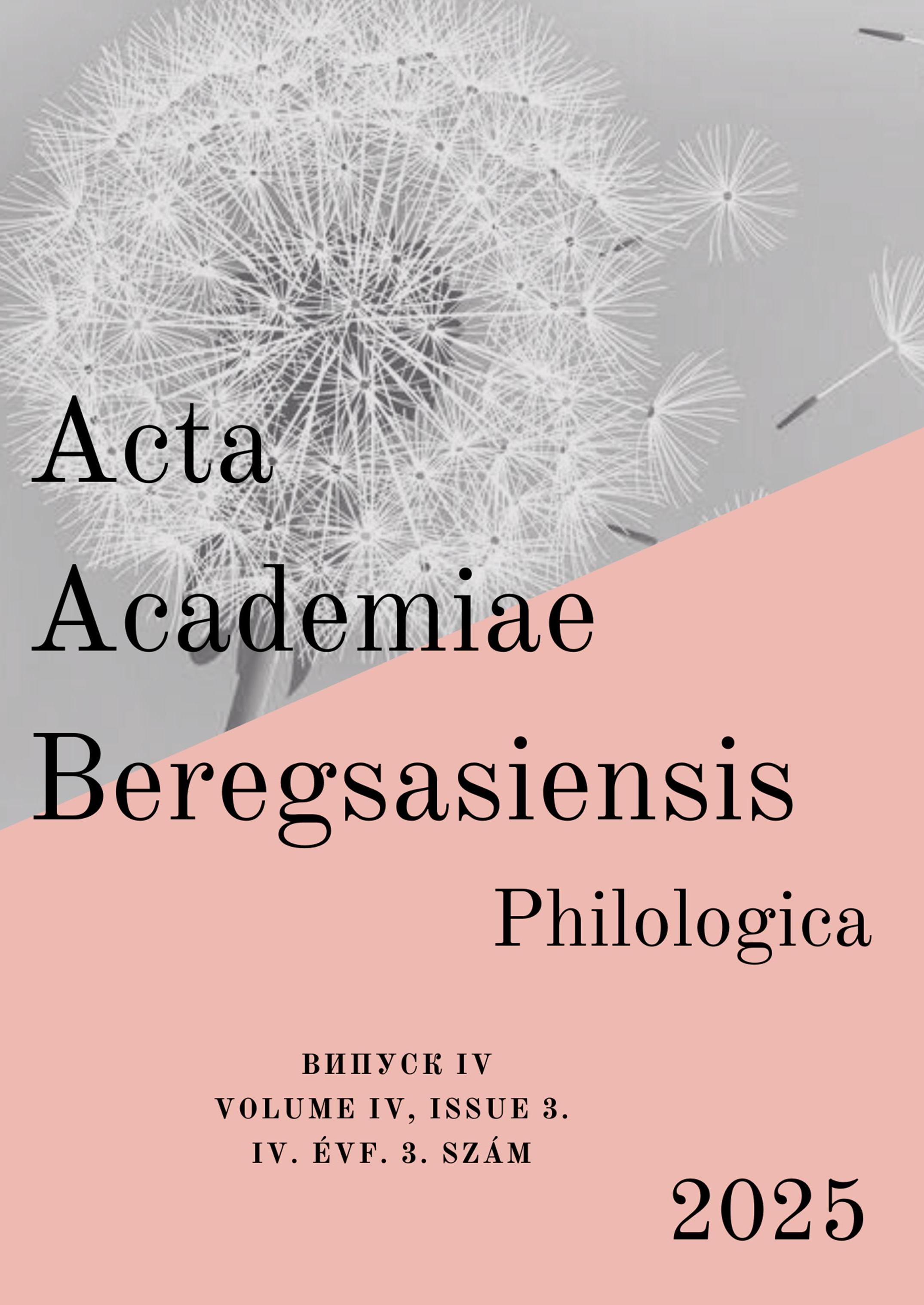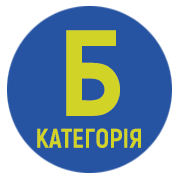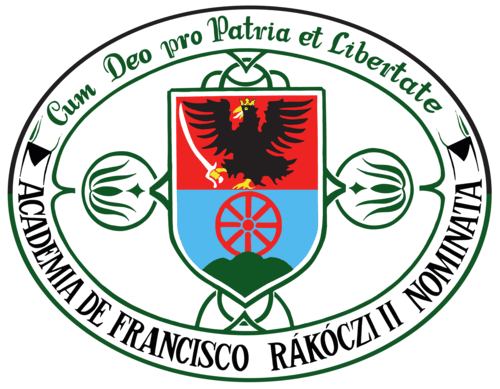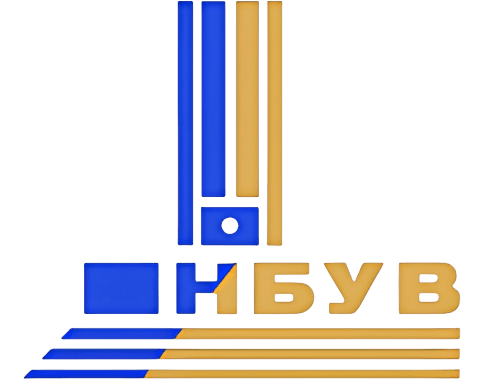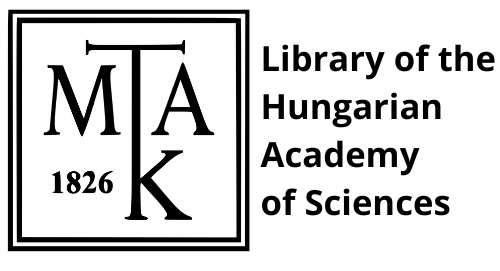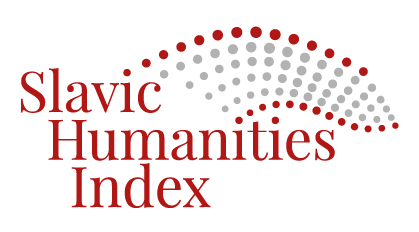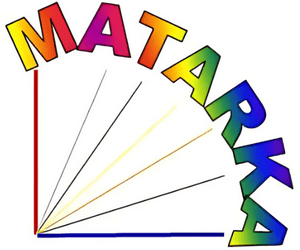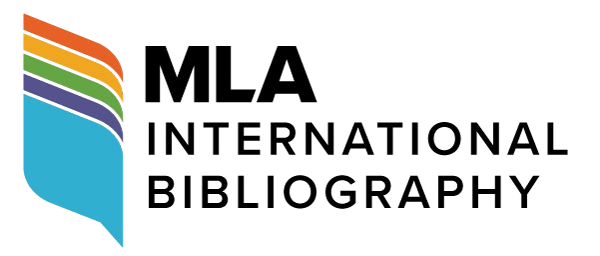Sacred space of memory in Andrzej Stasiuk’s novel “The River of Childhood”
DOI:
https://doi.org/10.58423/2786-6726/2025-3-185-204Keywords:
Andrzej Stasiuk, symbolism, sacred space, river, memory, childhood, chaos, small homelandAbstract
The authors of the article focus on the sacred and profane, individual and collective manifestations of the river topos as a space of memory in Andrzej Stasiuk’s book “River of Childhood”, considering the artistic representations and reinterpretations of the concepts of small homeland and childhood. The study interprets the fundamental image of the Bug River in the novel and its transformation through the writer’s memories from a real and profane, natural-geographical object into a sacred symbol of the border, transition, chaos, time, transience, and death. Particular attention is paid to the ambivalence of the river symbol: in the interpreted novel, the river simultaneously attracts and threatens, evokes admiration and fear, shapes the first existential feelings and experiences, which later become the foundation of creative intentions and remain as signs of difficult memory and complex experience. The multifaceted symbolism of the river is analysed on the basis of the classical concepts of Juan Eduardo Cirlot, Manfred Lurker, Jerzy Bartmiński, and Władysław Kopaliński, who interpret the river as a universal symbol of the flow of life, death, and rebirth, an archetypal boundary between worlds and between different dimensions of human experience. The river symbol encompasses both the energy of creation and destruction, being a place of love, crime, and death; in sacred interpretations, it personifies prophecy, the book of the covenant, and salvation, while simultaneously marking the boundary between sin and repentance, purgatory and paradise. The heterogeneous symbolism of the river in Stasiuk’s novel is embodied as a sacred axis of the world (axis mundi), which unites the individual experience of childhood with the universal laws of being. The river symbolism in the interpreted novel is not only a topography of memory, but also a special “language of childhood”, through which the writer’s narrative of returning to the origins is constructed. The sacred space of memory in Stasiuk’s novel manifests itself in the ancestral concept of confession and repentance: memory becomes the flow of the river that brings salvation from the traumatic experiences of the past. The river simultaneously preserves childhood memories and enables the overcoming of painful recollections – a symbolic washing away of sins in the water of the River of Childhood. In Stasiuk’s novel, the river embodies the essential features of a universal mythological and sacred-biblical image, closely intertwined with profane folk beliefs, in which the writer’s individual memory resonates with collective archetypal notions of rebirth, transience, death, and eternity. The approach proposed in this research combines literary interpretation with cultural-anthropological and archetypal-symbolic dimensions, emphasising the importance of the small homeland and the sacred topography of childhood in contemporary Polish literature. Future studies of Andrzej Stasiuk’s works should employ an interdisciplinary interpretation, encompassing the problems of literary anthropology, cultural geography and geopoetics, philosophy of memory, and comparative literary studies, which will enable new readings of Stasiuk’s prose and deepen the understanding of his literary phenomenon within the context of modern Ukrainian literary scholarship.
References
1. Vasylenko, Yana 2022. Semantychnyy prostir toposu riky: Dnipro [Semantic space of the river topos: Dnipro]. In: Materialy II Mizhnarodnoyi slavistychnoyi konferenciyi, prysviachenoyi pamyati Sviatykh Kyryla i Mephodiya. Kyyiv–Sophiya–Kharkiv–Shumen: Kharkivske istoryko-philolohichne tovarystvo, s. 223–230. https://dspace.hnpu.edu.ua/server/api/core/bitstreams/e7bce354-b630-4710-937d-c2326ce460ac/content (In Ukrainian)
2. Hladka, Kateryna 2014. „Halycki opovidannya”: poshuky polskoyi dushi Andzheya Stasyuka [“Galician Stories”: Andrzej Stasiuk’s Search for the Polish Soul]. https://starylev.com.ua/blogs/galycki-opovidannya-poshuky-polskoyi-dushi-andzheya-stasyuka (Accessed: 20.09.2025). (In Ukrainian)
3. Ilchenko, Yulia 2014. Skhid bilsh sexi [East is more sexy]. https://zbruc.eu/node/26996 (Accessed: 20.09.2025). (In Ukrainian)
4. Kalytko, Kateryna 2013. Richka yak symvol viry [The river as a symbol of faith]. https://kkateryna.wordpress.com/2013/10/04/річка-як-символ-віри/ (Accessed: 20.09.2025). (In Ukrainian)
5. Loza, Pavlo 2024. Andzhey Stasyuk: „Buh – tam zaraz mezha viyny” [Andrzej Stasyuk: “The Bug is the border of war now”]. https://nasze-slowo.pl/andzhej-stasyuk-bug-tam-zaraz-mezha-vijny/ (Accessed: 20.09.2025). (In Ukrainian)
6. Lyubka, Andriy 2021. Andzhey Stasyuk. Vsesvitnyo vidomyy pysmennyk iz hlukhoho sela [Andrzej Stasyuk. A world-famous writer from a backwater village]. https://novapolshcha.pl/article/andzhei-stasyuk-vsesvitno-vidomii-pismennik-iz-glukhogo-sela/ (Accessed: 20.09.2025). (In Ukrainian)
7. Stasyuk, Andzhey 2001. Devyat’ [Nine]. Lviv: Klasyka. (In Ukrainian)
8. Stasyuk, Andzhey 2007. Dorohoyu na Babadag [On the way to Babadag]. Kyyiv: Krytyka. (In Ukrainian)
9. Stasyuk, Andzhey 2009. Fado [Fado]. Kyyiv: Hrani-T. (In Ukrainian)
10. Stasyuk, Andzhey 2014. Halyc’ki opovidannya [Galician stories]. Lviv: Vydavnytstvo Staroho Leva. (In Ukrainian)
11. Stasyuk, Andzhey 2015. Skhid [East]. Lviv: Vydavnytstvo Staroho Leva. (In Ukrainian)
12. Stasyuk, Andzhey 2017. Yak ya stav pysmennykom. Sproba intelektualnoyi avtobiographiyi [How I Became a Writer. An Attempt at an Intellectual Autobiography]. Busturiv: Diskursus. (In Ukrainian)
13. Bartminsky, Yezhy red. 1999. Slovnik stereotypuv i symboly lyudovykh. Kosmos. Zyemya, voda, podzyemye (Tom I) [Dictionary of Folk Stereotypes and Symbols. Space. Earth, Water, Underground (Volume I)]. Lyublin: Vydavnitstvo Universytetu Maryi Curie-Sklodovskyey. (In Polish)
14. Tsyes’lak, Yatsek 2024. Andzhey Stasyuk zhegna sye z Rosyou. „Zheka dzyetsinstva” portretuye okrutsyenstva svyata [Andrzej Stasiuk bids farewell to Russia. “The River of Childhood” portrays the cruelties of the world]. https://www.rp.pl/literatura/art40480631-andrzej-stasiuk-zegna-sie-z-rosja-rzeka-dziecinstwa-portretuje-okrucienstwa-swiata (Accessed: 20.09.2025). (In Polish)
15. Cirlot, Juan Eduardo 2006. Slovnik symboly [Dictionary of symbols]. Krakuv: Znak. (In Polish)
16. Kopalinsky, Vladyslav 2012. Slovnik symboly [Dictionary of symbols]. Varshava: Ofitsyna Vydavnicha Rytm. (In Polish)
17. Lurker, Manfred 1989. Slovnik obrazuv i symboly bibliynykh [Dictionary of Biblical Images and Symbols]. Poznan: Pallottinum. (In Polish)
18. Novatsky, Daryush 2024. Zheka svyenta i psheklyenta. Nova ksyonzhka Stasyuka to dobro literatskye z vysokyey pulki [A sacred and cursed river. Stasiuk's new book is a literary masterpiece of the highest order]. https://wyborcza.pl/7,75517,31042823,rzeka-swieta-i-przekleta-nowa-ksiazka-stasiuka-to-dobro-literackie.html (Accessed: 20.09.2025). (In Polish)
19. Potsiask-Kartechka, Yoanna 2005. Zheka i sacrum [The river and the sacrum]. https://ruj.uj.edu.pl/server/api/core/bitstreams/a11610c6-1d4a-42c5-9a10-5bd7588e3f7c/content (Accessed: 20 September 2025). (In Polish)
20. Sobolyevska, Yustyna 2024. „Nye mozhna bezkarnye patshets na ten kray”. Stasyuk v novey ksyonzhtse zabyera nas nad Bug [“You can’t look at this country with impunity.” In his new book, Stasiuk takes us to the Bug River]. https://www.polityka.pl/tygodnikpolityka/kultura/2256511,1,nie-mozna-bezkarnie-patrzec-na-ten-kraj-stasiuk-w-nowej-ksiazce-zabiera-nas-nad-bug.read (Accessed: 20.09.2025). (In Polish)
21. Solsky, Robert 2024. „Zheka dzyetsinstva”. V meandrakh sentymentu? [“The River of Childhood.” In the Meanders of Sentiment?]. https://kacikpopkultury.pl/rzeka-dziecinstwa-w-meandrach-sentymentu-recenzja/ (Accessed: 20.09.2025). (In Polish)
22. Sovinsky, Mikhal 2024. Svyat yest zavshe cyekavshy nizh to, co uda sye o nim napisats [The world is always more interesting than what can be written about it]. https://www.tygodnikpowszechny.pl/andrzej-stasiuk-swiat-jest-zawsze-ciekawszy-niz-co-uda-sie-o-nim-napisac-187089 (Accessed: 20.09.2025). (In Polish)
23. Stasyuk, Andzhey 2024a. Nye moge bez pshervy yezdzits na step [I can’t go to the steppe all the time]. https://www.dwutygodnik.com/artykul/11332-nie-moge-bez-przerwy-jezdzic-na-step.html (Accessed: 20.09.2025). (In Polish)
24. Stasyuk, Andzhey 2024b. Zheka dzyetsinstva [The River of Childhood]. Volovyets: Vydavnitstvo Charne. (In Polish)
25. Zakshevsky, Patryk 2024. Andzhey Stasyuk, „Zheka dzyetsinstva” [Andrzej Stasiuk, “The River of Childhood”]. https://culture.pl/pl/dzielo/andrzej-stasiuk-rzeka-dziecinstwa (Accessed: 20.09.2025). (In Polish)
Downloads
Published
How to Cite
Issue
Section
License
Copyright (c) 2025 Vira Meniok, Yuliya Perih

This work is licensed under a Creative Commons Attribution 4.0 International License.
Authors retain copyright and grant the journal the right of first publication. The work is simultaneously licensed under a Creative Commons Attribution 4.0 International License (CC BY 4.0), which permits others to share the work with appropriate credit given to the author(s) and the initial publication in this journal.
